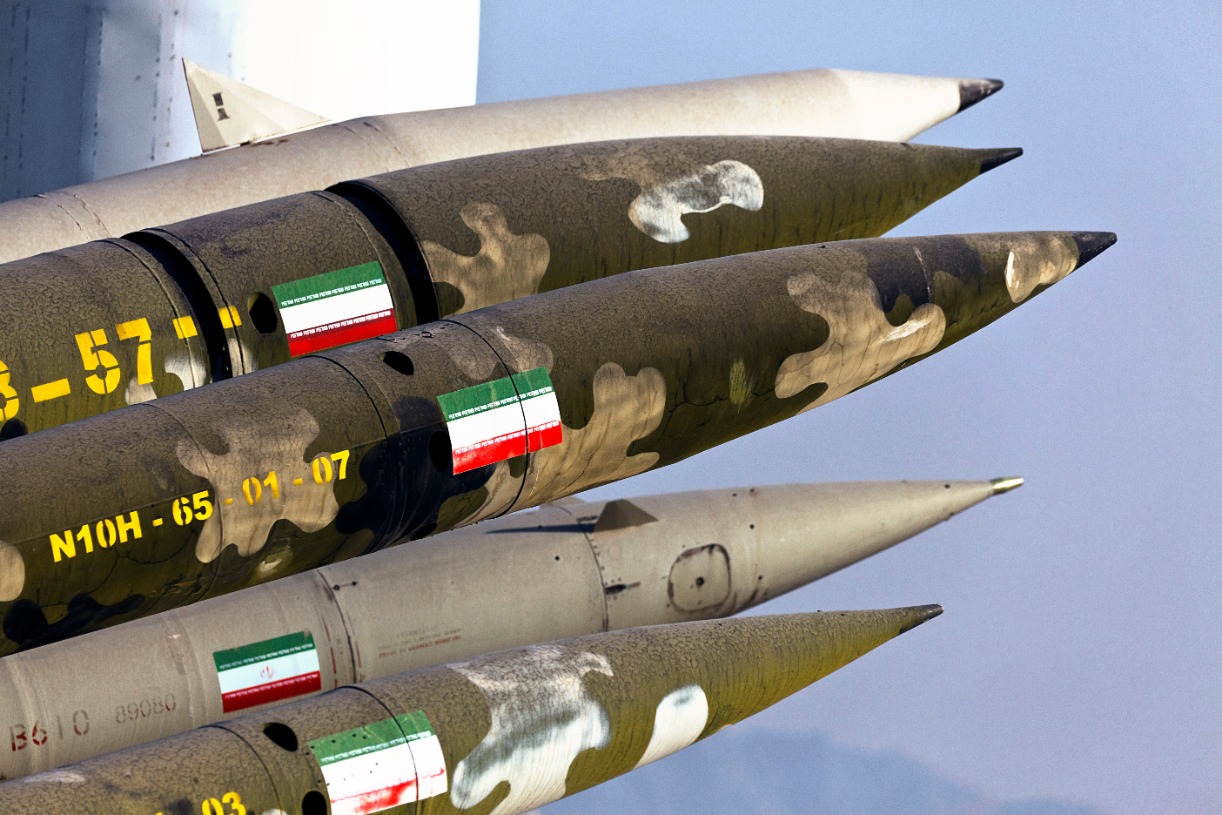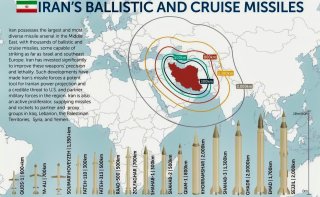Iran Has 3,000 Missiles That are a Dangerous Threat to the U.S. Military
Back in 2022, Commander of the Central Command (CENTCOM) General Kenneth McKenzie estimated that the Iranian military possesses over 3,000 ballistic missiles of all types.
The drums of war are thumping ever louder in the Middle East.
Last week, Iranian-backed militias launched a drone strike against a secretive U.S. military outpost on the border between Jordan and Syria. The result of the attack was three American troops dead and dozens wounded.
The U.S. military responded with a series of precision strikes against Iran-backed militias in Iraq and Syria. The Biden administration has indicated further military action.
If the situation continues to escalate, the Iranian missile arsenal might be a primary target for U.S. retaliatory strikes. Expansive and capable, Tehran’s missile forces present a viable threat to U.S. forces and interests in the region.
Iranian Missile Capabilities: A Primer
Back in 2022, Commander of the Central Command (CENTCOM) General Kenneth McKenzie estimated that the Iranian military possesses over 3,000 ballistic missiles of all types.
Iranian ballistic missiles can reach targets 2,000 kilometers (about 1,300 miles) away. It is the only country to have achieved such a potent ballistic missile capability without having nuclear weapons.
Although the Iranian military has plenty of ballistic missiles, their accuracy is suspect, thus restricting Tehran’s ability to achieve precision strikes. At best, Iranian ballistic missiles would be able to hit large U.S. bases in the region but not any moving targets.
Iran has two types of ballistic missiles and is working on a third, which would be the most dangerous.
SRBMs
Short-Range Ballistic Missiles (SRBMs) comprise the majority of Iran’s ballistic missile capabilities. These munitions have a range of less than 500 kilometers (around 310 miles). Most of these SRBMs are derivatives of the Soviet SCUD tactical ballistic missiles. Although Iran has hundreds of these munitions, it only has about 100 transporter erector launchers (TELs) that can carry them into battle. Tehran has also been producing homemade SRBMs, with outside assistance, such as the Shahab-1/2, Qiam, and Fateh-110.
MRBMs
Medium-Range Ballistic Missiles (MRBMs) are the heavy hitters of the Iranian missile arsenal. With ranges up to 1,300 miles, these missiles can reach any target in the Middle East and even parts of Eastern Europe, including Ukraine, Bulgaria, Greece, and Romania. However, like the SRBMs, Tehran has more MRBMs than launchers. Without launchers, the munitions are static, and thus easy targets for air attacks and missile strikes.
ICBMs
In addition, Tehran has been working on an Intercontinental Ballistic Missile (ICBM) capability that could reach Europe and maybe even the United States for decades.
Back in the late 1990s, the U.S. Intelligence Community assessed that by 2015, Tehran could have an ICBM capability if it received substantial assistance from U.S. near-peer adversaries like China and Russia. The Islamic Republic didn’t get that substantial assistance and didn’t meet that timeframe. Heavy international sanctions over the country’s illegal nuclear weapon program further curtailed Tehran’s ICBM goals.

However, in recent years, Iran has been pushing hard for an ICBM capability. It continues to develop space launch vehicles, such as the Safir and Simorgh, which include similar technology to that required for ICBMs. Tehran, in particular, has developed substantial boosters with enough lift to support ICBMs.
About the Author
Stavros Atlamazoglou is a seasoned defense journalist specializing in special operations and a Hellenic Army veteran (national service with the 575th Marine Battalion and Army HQ). He holds a BA from Johns Hopkins University and an MA from the Johns Hopkins School of Advanced International Studies (SAIS). His work has been featured in Business Insider, Sandboxx, and SOFREP. Email the author: [email protected].
Main Image Credit: CSIS.

